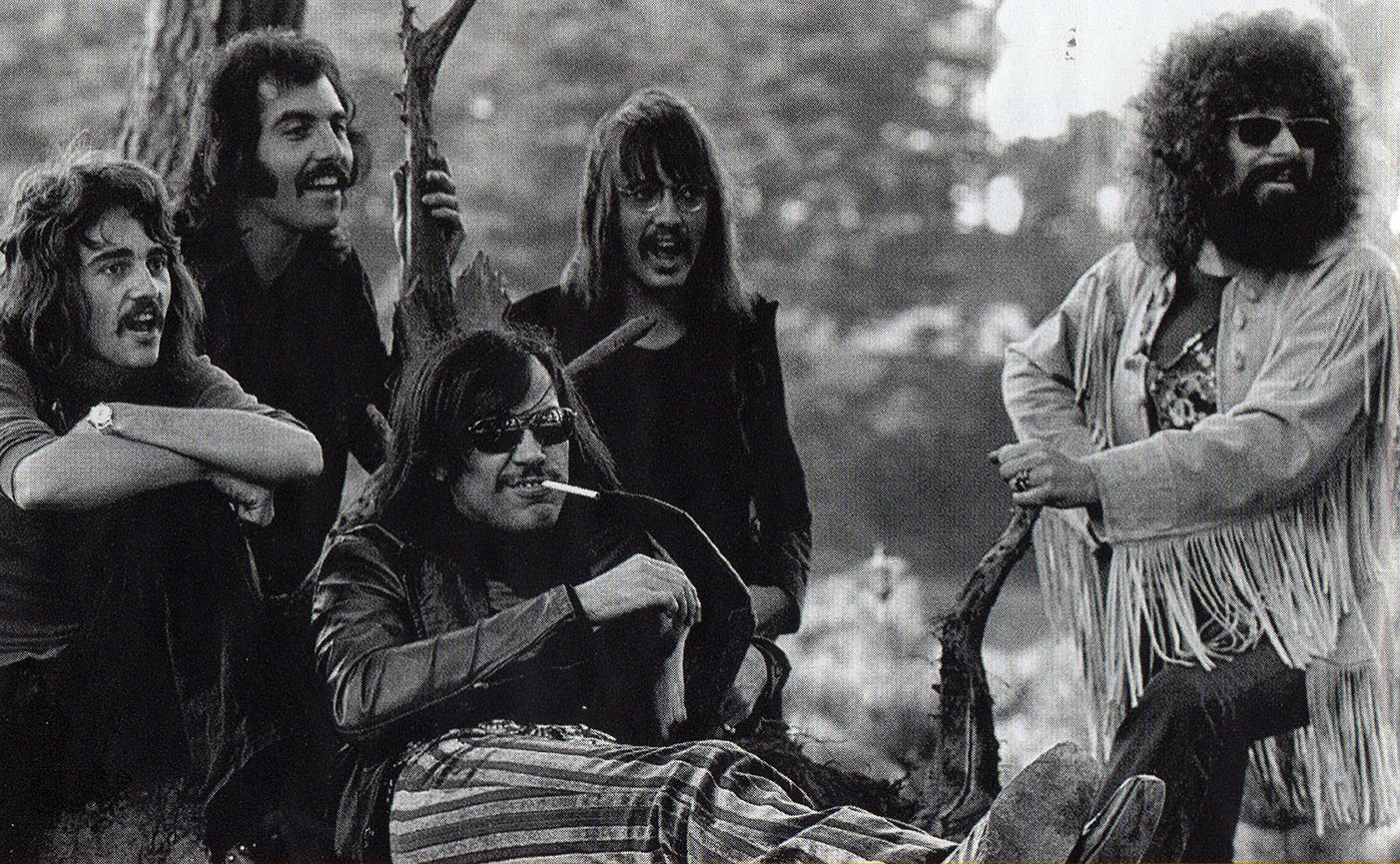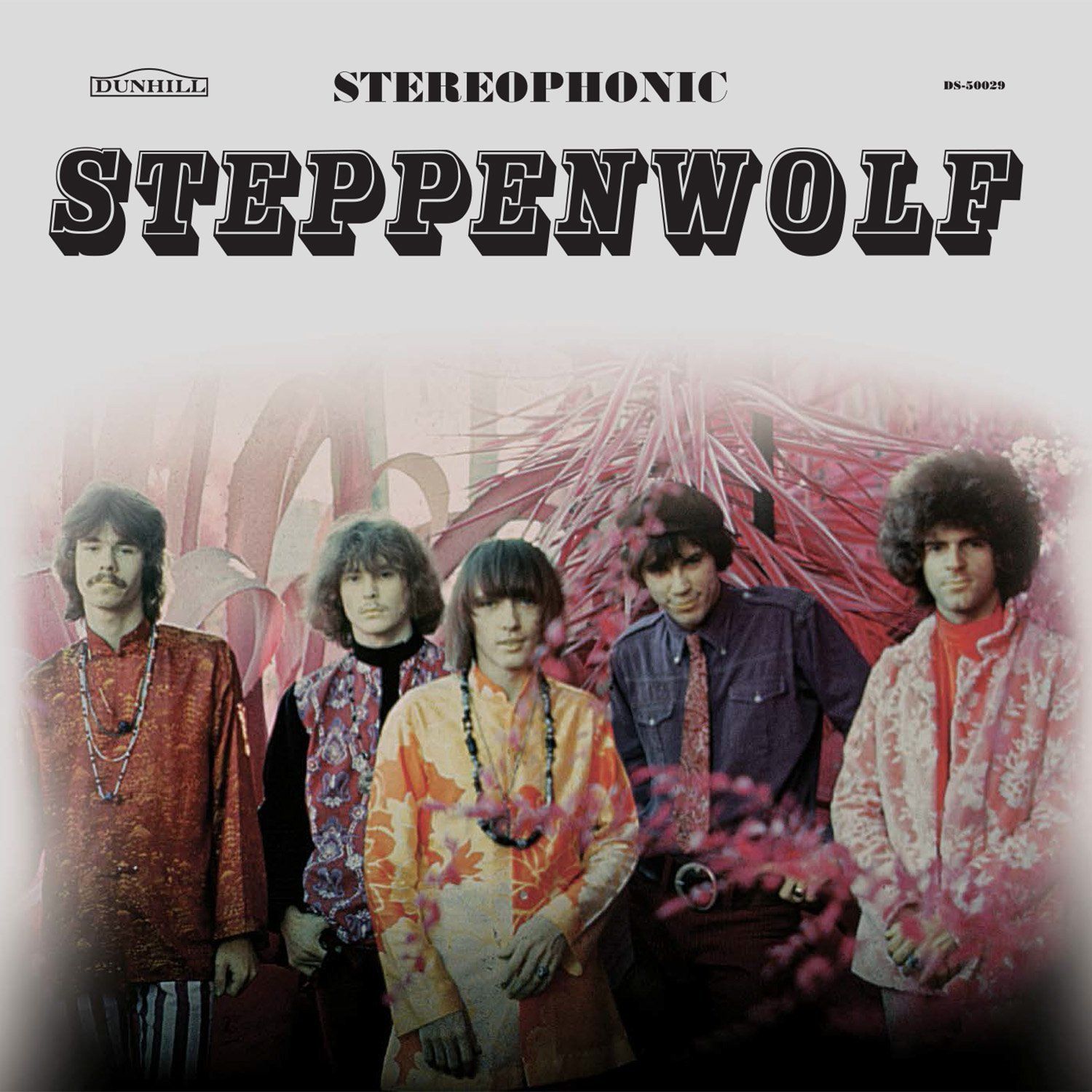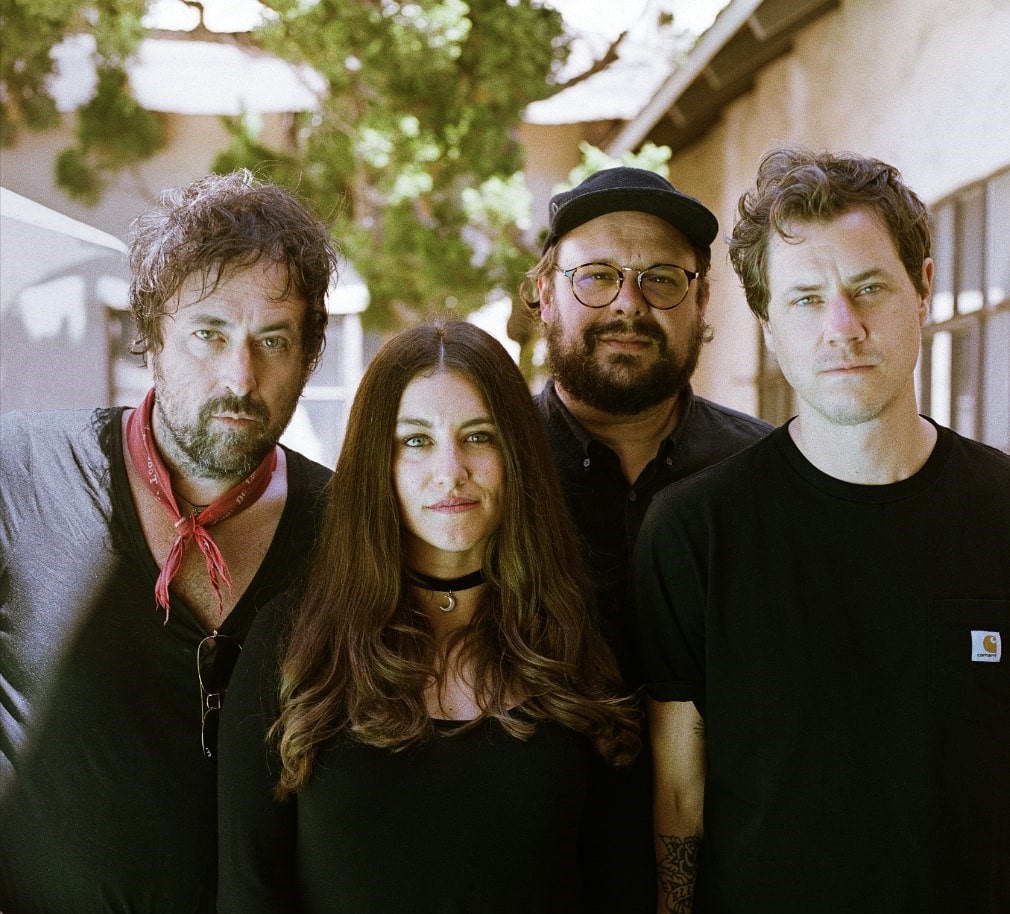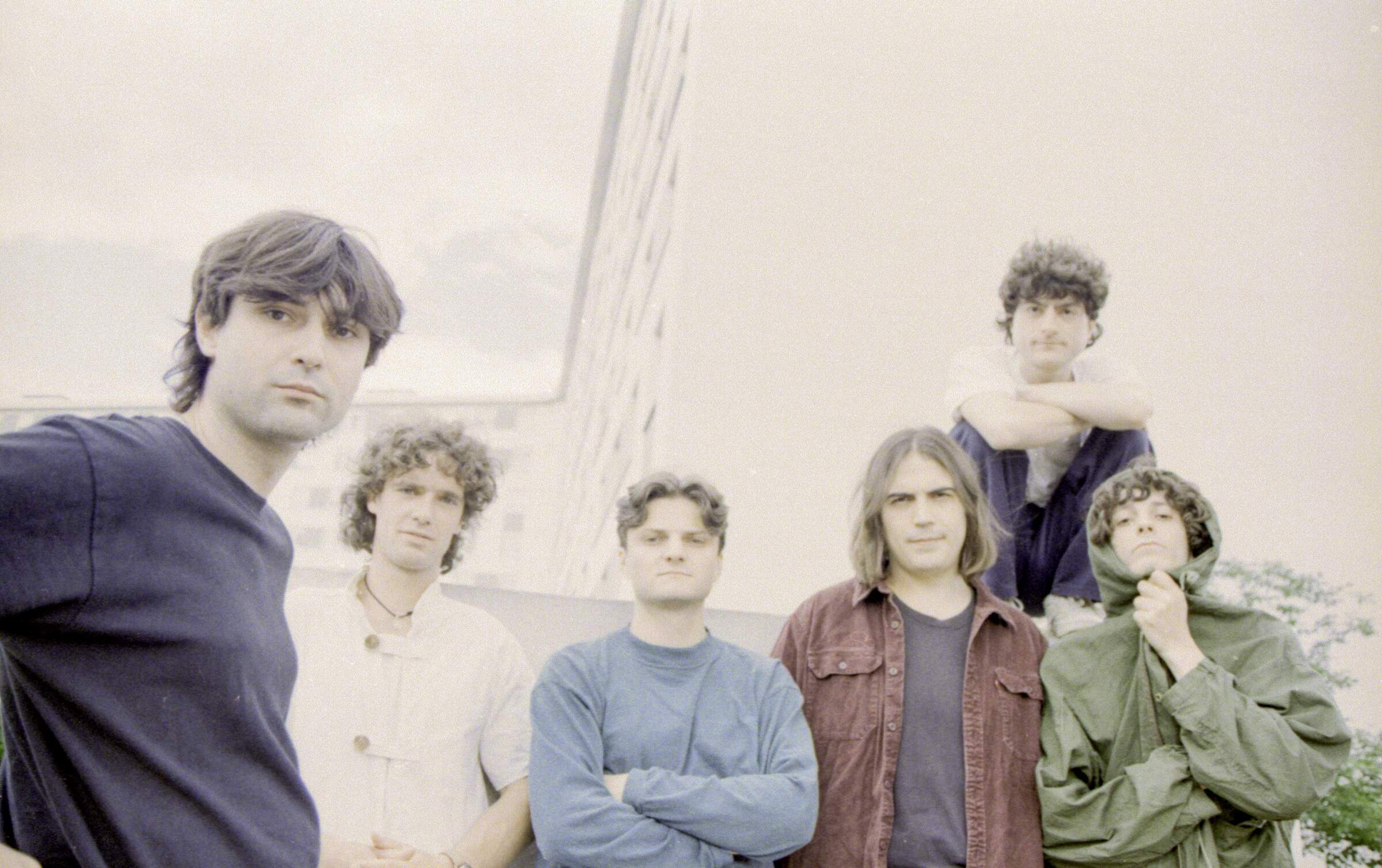The Steppenwolf Story – Chapter One
January 2018 marks the 50th anniversary of the release of the debut album by the Los Angeles based Canadian band, Steppenwolf, a group fronted by East German born vocalist/rhythm guitarist John Kay, who would go on to record six studio albums, a live album recorded very early on and aptly titled “Early Steppenwolf” and the incredible 1970 2 LP live set simply titled “Steppenwolf Live” all released on the ABC/Dunhill Records label in less than four years.
Steppenwolf had its origin in a Canadian band, The Sparrow, who released two singles in 1966 with very limited success. ABC/Dunhill producer Gabriel Mekler, however, heard some tapes and suggested that Kay and his band mates record some demos. Sparrow guitarist Dennis Edmonton declined the invitation, but Kay, along with drummer Jerry Edmonton (Dennis’ brother) and keyboard player Goldy McJohn, decided to join Kay and were joined by teenage guitar prodigy Michael Monarch and bass guitarist Rushton Moreve. The band began rehearsing in a garage beneath Kay’s apartment. The vocalist remains convinced that the dark, distorted and menacing style the band emerged with was the result of the battered and borrowed equipment their impoverishment forced them to employ at the time.
The band’s sound was similar to that of several others of the day, Led Zeppelin, The Jeff Beck Group and The Jimi Hendrix Experience, among them. The band’s form of music took on a name derived from the lyrics of a Dennis Edmonton tune, given to the band in demo form, “Born To Be Wild,” written under his new pseudonym, Mars Bonfire, inspired by a motorcycle poster bearing the legend “BORN TO RIDE.” The song, which Kay decided to rerecord included a phrase Bonfire used to describe the sensation of riding a powerful motorcycle-“heavy metal thunder”-that rock journalists recognized as an apt description of this new style of music and quickly became part of rock and roll jargon. But “Born To Be Wild” was destined to be remembered for much more than the label it gave to a musical genre. Everything about the tune was perfect from its hedonistic sentiment to its soaring melody to its incredible band performance. Upon its release as the band’s third single, it reached #2 on the US charts, attaining gold record status, and topped at #30 in the UK.

The band’s name, taken from Herman Hesse’s novel was suggested by producer Mekler. Their debut s/t LP, released in January 1968 was comprised of eleven tracks, quite an interesting mixture of styles, sources and influences. The album’s opening track “Sookie Sookie” was an R&B stomper, written by Don Covay and Steve Cropper of Booker T & The M.G.’s. It was also the a-side of the band’s second single, although it failed to chart. The John Kay/Gabriel Mekler penned “Everybody’s Next One” is a melodious ode to the confusion of a young woman caught up in the lifestyle of the 1960s, and served as the b-side of “Born To Be Wild.” John Kay’s “Berry Rides Again” is the band pastiching the style of one of the first rock and roll stars who went on to become a legend. The tune would reappear in December 1969 as the b-side of the title track of the group’s fourth studio album “Monster.” Steppenwolf’s blues roots are apparent in their five minute take of Willie Dixon’s classic “Hootchie Kootchie Man” featuring tasty guitar work by Monarch. Next up, was the three and a half minute classic “Born To Be Wild” which besides climbing so high on the charts would be one of the band’s two tracks to appear on the 1969 soundtrack of the motorcycle movie classic “Easy Rider” starring Peter Fonda and Dennis Hopper. Side one of the album closes with the nearly six minute Kay original “Your Wall’s Too High” one of the vocalist’s earliest ventures into social commentary, something the band would become increasingly well known for as time passed. The song also served as the b-side of “The Pusher.” Side two opens with Kay’s classic “Desperation” a nearly six minute piece of philosophical introspection regarding the uncertainty of the times, with the heady days of drug usage balanced against the realities of everyday life in the United States. The band’s cover of Hoyt Axton’s classic anti-drug masterpiece “The Pusher” included its controversial refrain of “God damn the pusher” and was the other track included on the soundtrack of “Easy Rider,” as well as being the a-side of a 45, giving the band even more exposure and putting an exclamation point on the group’s differentiation between soft drugs such as marijuana and its stern stance against hard drugs like heroin. This track with a run time of nearly six minutes in its studio version was often stretched out to fifteen or more minutes when played live and was a staple of Steppenwolf gigs throughout. The band’s debut single “A Girl I Knew” is a vaguely psychedelic pop number complete with harpsichord and stands in stark contrast to heavy numbers like “Born To Be Wild.” The John Kay/Gabriel Mekler rocker “Take What You Need” the b-side of “Sookie Sookie” features fine guitar by Monarch and piano by McJohn in its three and a half minutes. The album closes with another dose of social commentary, the hard rocking “The Ostrich” with driving guitar by Monarch and organ courtesy of McJohn, while delving into issues such as the ecology and the plight of Americans, as they approach the age of retirement amid the uncertainty of the days political unrest fueled by the War in Vietnam and an examination of the exercise of First Amendment rights under the Nixon administration.

A most fitting closer to one of the finest debut albums by a rock band, and one which showcased the band’s instrumental prowess, diverse influences and social awareness, a combination that would recur throughout the band’s original lifespan, and set them apart from nearly all others. The band’s output remained consistently strong despite numerous personnel changes, especially among lead and bass guitarists. The album itself sold well in the U.S., reaching #6 on the charts and attaining gold record sales status, success enjoyed by the band consistently. In their native Canada the album did even better, reaching #1, while sales in the U.K. were not nearly as impressive, attaining only #59, and oddly enough as it may seem only one of the band’s albums would do better there, the group never having an LP reach the Top 40. As for the US and Canada, on the other hand, the band’s success was just beginning as will be chronicled in future reviews of the Steppenwolf ABC/Dunhill Records catalog.
Steppenwolf – “Steppenwolf” (1968)
– Kevin Rathert
All photo materials are copyrighted by their respective copyright owners, and are subject to use for INFORMATIONAL PURPOSES ONLY!




Love reading about the group's from that halcyon era. Keep 'em coming.
Thank you for the kind words. I have 5 of the 8 chapters finished. 3 to go. Glad you enjoyed the first installment. I just hope I can convey the quality of their material and musicianship.
I met John Kay around 1990 and told him that my first big rock concert was Steppenwolf at the Inglewood Forum in 1970 and he said, "I don't remember a whole lot about the 70s," in true rock star style. Very nice man. Enjoyed the article! The first two albums are my favorites but there are some great tracks on each of the albums up through For Ladies Only.
John Kay is still to this day my greatest ever influence. As a young man of 13, hearing lyrics such as ‘I can’t follow what’s behind me” and “you fill this House with things of gold…” magical. And the second best album of all-time was Steppenwolf 7. The best album was Metamorphosis by Iron Butterfly which was also produced by Bill Podolor. John Kay, I would love to meet you.